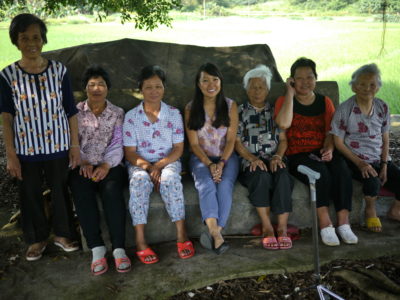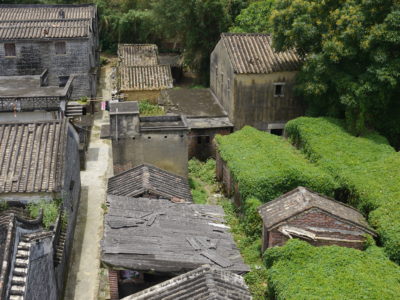I’ve always known that my Yeye (paternal grandfather) came from Taishan – and recited as much in a matter-of-fact tone if anyone ever questioned my ancestry – but I had no idea what I was getting into when I embarked on this leg of my trip.

A few weeks back, I asked my Dad to chase down the name of my Yeye’s village name through old contacts from the Wong’s Association (a Chinese cultural organization my grandfather was heavily involved with during his life). He scribbled it onto paper, snapped a photo and sent it to me via Whatsapp. I hired a translator for a couple days and hopped onto a bus, with my fingers crossed.
I learned plenty on my two days in Taishan. It was emotional. It was hot. It was a lot.
Like many fellow Chinese-Canadians, my Yeye was from the coastal province of Guangdong in the south of China. Guangdong’s capital is the Cantonese-speaking city of Guangzhou, a sprawling and sweaty metropolis of nearly ten million people. Taishan, the area which my Yeye hails from, is a much smaller ‘township’ boasting roughly one million inhabitants. Fun fact: It’s also apparently the world’s “number one hometown of overseas Chinese”. It is said that at least half of North American-Chinese come from Taishan.
People have emigrated from Taishan for many generations. And you can see the positive benefits of money being sent back to family members left behind: There’s a long “pedestrian street” with plenty of clothing boutiques and restaurants, maintained roads, and thriving local businesses. Local attractions include nearby hot springs, a beach, and their local dish – an eel clay pot rice.

I was reduced to smiles and nods when I met with the local clansmen of the Wong Association. I saw my Yeye’s name on a donation plaque for one of their many projects, and a glimpse into the wider network that he so faithfully gave his time and energy to.
When we set out for the village that afternoon, I wasn’t quite sure what to expect. We took a turn off the main road and drove down a dirt path for a stretch until the village appeared in view.
The village (“Gao Long”) is nearly 150 years old. Though most of the communal buildings were rebuilt in the last 20 years, you could hardly tell once pollution and humidity set in .
At its peak, the village had as many as 300 people, all who descended from the same ancestral family. Many people married off with folk from nearby towns. Like many young couples of their era, my Mama and Yeye had an arranged marriage. And like the other twenty-somethings, they left the village (for Hong Kong) during the late 1940s due to civil unrest and mounting political tensions.
It was a sweltering Sunday afternoon. I offered up candy and snacks to anyone I came across, mostly elders and toddlers.

In every Chinese village, there is an Ancestral Hall that is built to host the tablets which symbolize the community’s founding family. But many of were destroyed during China’s Cultural Revolution. Unfortunately, my Yeye’s village did not escape this fate. The hall was eventually rebuilt, but was damaged again by a typhoon. Today it serves as a storage.

I toured through the village and saw various properties that my Yeye’s father had owned at one point or another (up to three, I was told). But today, most were plots of land overgrown with shrubbery.
I was told many stories by the village elder who was one of the last people to know my Yeye personally. Even though they were nearly 8 years apart, he had memories of my grandfather taking him fishing at the nearby pond when they were much younger. When I asked how he remembered him, he said he was “very honest and pure”.
My Yeye had 3 other brothers. Two died young, and were married off in “ghost weddings” to other’s family’s daughters who also died young, as per Chinese tradition/superstition.

He showed me the village “Jook Po”, a genealogy book that documents every village’s descendants and family trees. I discovered that I belong to the 33rd generation.
The following morning, I came back with flowers in hand to pay my respects to the village ancestors and my great-grandparents.
We traversed as a small caravan through the fields to three separate plots. There didn’t seem to be any obvious path to me, but our guides knew these hills like the back of their hands. It was a walk I was happy to take in silence, as I was all too aware of the moment’s significance. I had reached my destination.